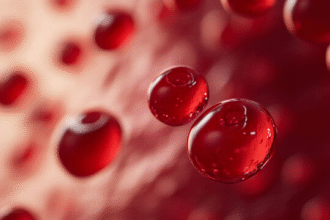Fatty Liver Disease (MASLD/MASH): A Practical Guide
Fatty liver disease means excess fat in liver cells (steatosis). Today, most non‑alcohol‑related cases are called metabolic dysfunction‑associated steatotic liver disease (MASLD), and when inflammation and liver‑cell injury are present with fibrosis risk, it’s termed MASH (previously NAFLD/NASH). Alcohol‑related liver disease is a separate condition.
Why it matters: Many people have no symptoms, yet some progress from simple steatosis → steatohepatitis (MASH) → fibrosis → cirrhosis and liver cancer. MASLD is also strongly linked to heart disease and type 2 diabetes.
Symptoms and Red Flags
- Often silent; possible fatigue, right‑upper‑quadrant discomfort, bloating
- Red flags needing prompt care: jaundice, very dark urine/pale stool, easy bruising/bleeding, leg/abdominal swelling, confusion/sleepiness (encephalopathy), vomiting blood or black stools, severe abdominal pain
Who Is at Risk?
- Overweight/obesity, especially central (visceral) fat
- Type 2 diabetes or insulin resistance; dyslipidemia; hypertension (metabolic syndrome)
- Hypothyroidism, polycystic ovary syndrome, obstructive sleep apnea
- Diet high in added sugars (especially sugary drinks/fructose), refined carbs, and saturated/trans fats; low in fiber
- Sedentary lifestyle, poor sleep
- Certain drugs/toxins: amiodarone, methotrexate, tamoxifen, some antivirals; industrial toxins
- Undernutrition/rapid weight loss and protein deficiency can also cause steatosis (malnutrition‑related fatty liver), especially in children
How It’s Diagnosed
- Blood tests: ALT/AST, GGT, alkaline phosphatase, bilirubin, albumin, INR, platelets; metabolic profile (glucose/A1c, lipids)
- Imaging: ultrasound (common first test); elastography (FibroScan/VCTE with CAP) estimates fat and stiffness; MRI‑PDFF quantifies fat; CT is less sensitive for mild fat
- Non‑invasive fibrosis scores: FIB‑4, NAFLD fibrosis score help decide need for specialty referral
- Liver biopsy: gold standard when diagnosis is uncertain or to stage inflammation/fibrosis when it will change management
Staging (plain language)
- Steatosis (fat only)
- Steatohepatitis (MASH): fat + inflammation/cell injury
- Fibrosis stages F0–F4 (F4 = cirrhosis)
The Most Effective Treatment: Lifestyle Therapy
Even modest weight loss improves liver health.
– Weight loss targets: 5% lowers liver fat; 7–10% can improve inflammation; ≥10% may regress fibrosis. Aim for gradual loss (0.5–1 kg/week).
– Eating pattern: Mediterranean‑style (vegetables, fruits, whole grains, legumes, nuts, olive oil; fish; minimal processed meats and refined carbs). Limit added sugars—especially sugary beverages—and ultra‑processed foods.
– Carbs and sugars: cut sugar‑sweetened drinks and high‑fructose snacks; choose high‑fiber carbohydrates.
– Fats: favor unsaturated fats (olive oil, nuts, seeds, fish); reduce saturated fats (fatty red meats, butter) and avoid trans fats.
– Protein: include adequate lean protein (fish, poultry, eggs, tofu/tempeh, legumes); helps weight control and muscle.
– Coffee: 2–3 cups/day (without excess sugar/cream) is associated with lower liver scarring risk in many studies.
– Physical activity: at least 150–300 minutes/week moderate aerobic activity (or 75–150 minutes vigorous) plus 2–3 days/week resistance training; benefits occur even without weight loss.
– Sleep and OSA: target 7–9 hours; evaluate/treat sleep apnea when suspected.
– Alcohol: avoid or keep very low; discuss safe limits with your clinician (many with MASLD are advised to abstain).
Medications and Procedures (specialist‑guided)
- Resmetirom (thyroid hormone receptor‑β agonist) may be used for MASH with moderate fibrosis (where available/appropriate).
- GLP‑1 receptor agonists (e.g., semaglutide) and dual incretin agents (e.g., tirzepatide) support weight loss and improve liver fat; useful when diabetes/obesity coexist.
- Pioglitazone can improve NASH in selected patients (often with T2D) but may cause weight gain/edema.
- Vitamin E (800 IU/day) may be considered in non‑diabetic, biopsy‑proven NASH—discuss risks/benefits.
- Statins are safe in MASLD and reduce cardiovascular risk; treat lipids per guidelines.
- Bariatric surgery or endoscopic metabolic procedures can markedly improve MASLD/MASH in eligible individuals with obesity.
Monitoring and Follow‑Up
- Recheck liver enzymes and metabolic markers after lifestyle changes (e.g., 3–6 months)
- Repeat non‑invasive fibrosis assessment periodically (e.g., 6–12 months) based on risk
- If cirrhosis: ultrasound ± alpha‑fetoprotein every 6 months for liver cancer surveillance; manage varices/ascites per guidelines
- Vaccination: ensure hepatitis A and B immunization; annual influenza and other routine vaccines
Special Populations
- Children/adolescents: emphasize family‑based lifestyle changes; limit sugary drinks/fast food; pediatric specialist follow‑up
- Pregnancy/postpartum: focus on healthy weight gain and metabolic screening; avoid weight‑loss drugs; revisit weight goals postpartum
- Malnutrition‑related fatty liver: careful, clinician‑supervised refeeding with adequate protein and micronutrients
Prevention Checklist
- Maintain a healthy waistline; be active most days
- Eat mostly minimally processed, high‑fiber foods; limit sugary drinks and refined carbs
- Sleep well; manage stress; treat metabolic conditions early
- Avoid unnecessary hepatotoxic supplements/drugs; limit alcohol
This article is for general education and does not replace medical advice. For diagnosis, personalized nutrition, and treatment decisions, consult a qualified clinician and follow local clinical guidance.







